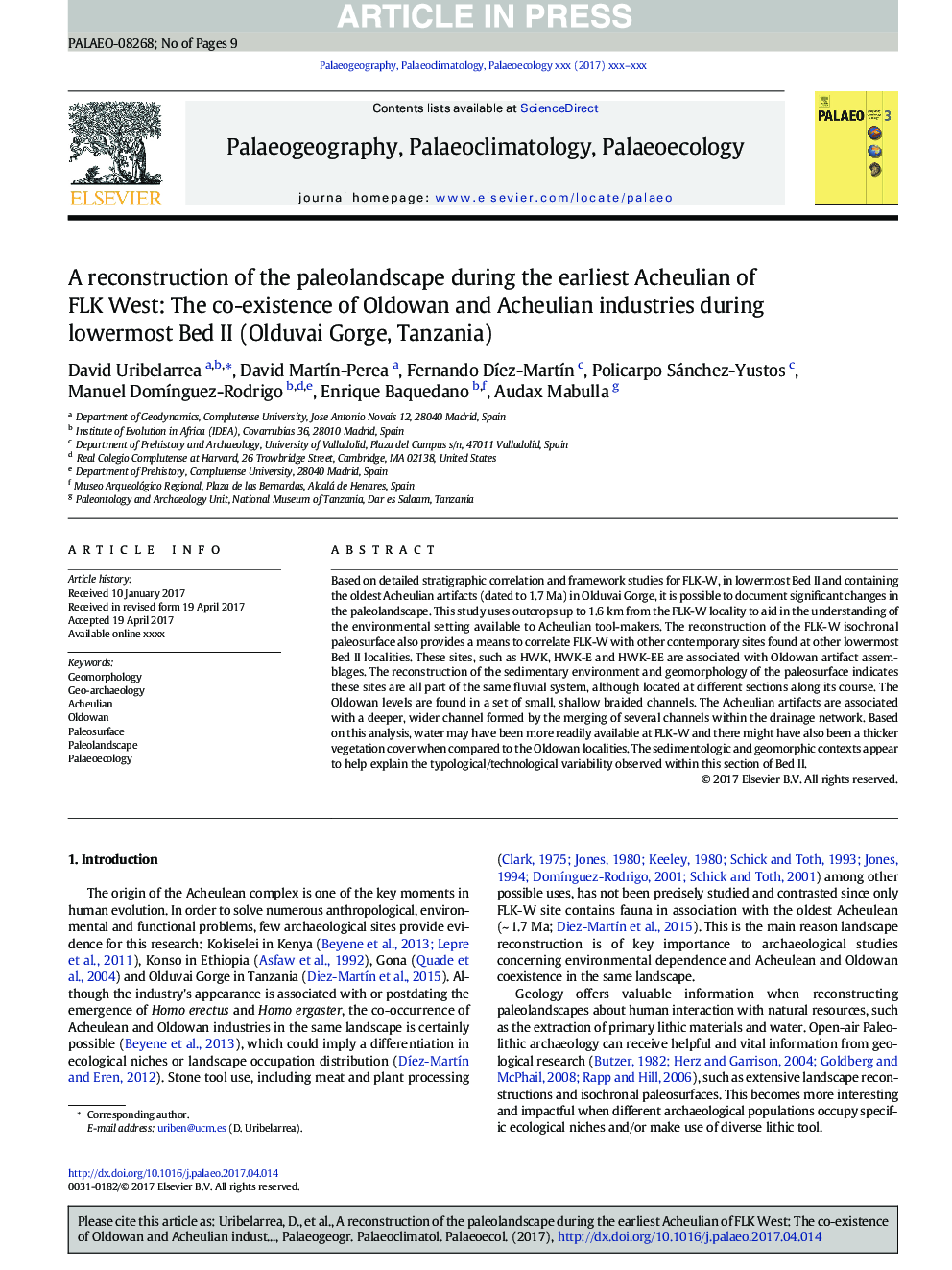| Article ID | Journal | Published Year | Pages | File Type |
|---|---|---|---|---|
| 8868527 | Palaeogeography, Palaeoclimatology, Palaeoecology | 2017 | 9 Pages |
Abstract
Based on detailed stratigraphic correlation and framework studies for FLK-W, in lowermost Bed II and containing the oldest Acheulian artifacts (dated to 1.7Â Ma) in Olduvai Gorge, it is possible to document significant changes in the paleolandscape. This study uses outcrops up to 1.6Â km from the FLK-W locality to aid in the understanding of the environmental setting available to Acheulian tool-makers. The reconstruction of the FLK-W isochronal paleosurface also provides a means to correlate FLK-W with other contemporary sites found at other lowermost Bed II localities. These sites, such as HWK, HWK-E and HWK-EE are associated with Oldowan artifact assemblages. The reconstruction of the sedimentary environment and geomorphology of the paleosurface indicates these sites are all part of the same fluvial system, although located at different sections along its course. The Oldowan levels are found in a set of small, shallow braided channels. The Acheulian artifacts are associated with a deeper, wider channel formed by the merging of several channels within the drainage network. Based on this analysis, water may have been more readily available at FLK-W and there might have also been a thicker vegetation cover when compared to the Oldowan localities. The sedimentologic and geomorphic contexts appear to help explain the typological/technological variability observed within this section of Bed II.
Related Topics
Physical Sciences and Engineering
Earth and Planetary Sciences
Earth-Surface Processes
Authors
David Uribelarrea, David MartÃn-Perea, Fernando DÃez-MartÃn, Policarpo Sánchez-Yustos, Manuel DomÃnguez-Rodrigo, Enrique Baquedano, Audax Mabulla,
